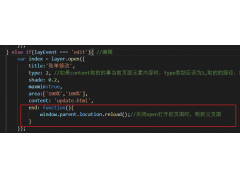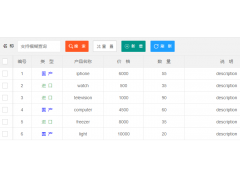Rapidly updating image with Data URI causes caching, memory leak(使用 Data URI 快速更新图像会导致缓存、内存泄漏)
问题描述
I have a webpage that rapidly streams JSON from the server and displays bits of it, about 10 times/second. One part is a base64-encoded PNG image. I've found a few different ways to display the image, but all of them cause unbounded memory usage. It rises from 50mb to 2gb within minutes. Happens with Chrome, Safari, and Firefox. Haven't tried IE.
I discovered the memory usage first by looking at Activity Monitor.app -- the Google Chrome Renderer process continuously eats memory. Then, I looked at Chrome's Resource inspector (View > Developer > Developer Tools, Resources), and I saw that it was caching the images. Every time I changed the img src, or created a new Image() and set its src, Chrome cached it. I can only imagine the other browsers are doing the same.
Is there any way to control this caching? Can I turn it off, or do something sneaky so it never happens?
Edit: I'd like to be able to use the technique in Safari/Mobile Safari. Also, I'm open to other methods of rapidly refreshing an image if anyone has any ideas.
Here are the methods I've tried. Each one resides in a function that gets called on AJAX completion.
Method 1 - Directly set the src attribute on an img tag
Fast. Displays nicely. Leaks like crazy.
$('#placeholder_img').attr('src', 'data:image/png;base64,' + imgString);
Method 2 - Replace img with a canvas, and use drawImage
Displays fine, but still leaks.
var canvas = document.getElementById("placeholder_canvas");
var ctx = canvas.getContext("2d");
var img = new Image();
img.onload = function() {
ctx.drawImage(img, 0, 0);
}
img.src = "data:image/png;base64," + imgString;
Method 3 - Convert to binary and replace canvas contents
I'm doing something wrong here -- the images display small and look like random noise. This method uses a controlled amount of memory (grows to 100mb and stops), but it is slow, especially in Safari (~50% CPU usage there, 17% in Chrome). The idea came from this similar SO question: Data URI leak in Safari (was: Memory Leak with HTML5 canvas)
var img = atob(imgString);
var binimg = [];
for(var i = 0; i < img.length; i++) {
binimg.push(img.charCodeAt(i));
}
var bytearray = new Uint8Array(binimg);
// Grab the existing image from canvas
var ctx = document.getElementById("placeholder_canvas").getContext("2d");
var width = ctx.canvas.width,
height = ctx.canvas.height;
var imgdata = ctx.getImageData(0, 0, width, height);
// Overwrite it with new data
for(var i = 8, len = imgdata.data.length; i < len; i++) {
imgdata.data[i-8] = bytearray[i];
}
// Write it back
ctx.putImageData(imgdata, 0, 0);
I know it's been years since this issue was posted, but the problem still exists in recent versions of Safari Browser. So I have a definitive solution that works in all browsers, and I think this could save jobs or lives!.
Copy the following code somewhere in your html page:
// Methods to address the memory leaks problems in Safari
var BASE64_MARKER = ';base64,';
var temporaryImage;
var objectURL = window.URL || window.webkitURL;
function convertDataURIToBlob(dataURI) {
// Validate input data
if(!dataURI) return;
// Convert image (in base64) to binary data
var base64Index = dataURI.indexOf(BASE64_MARKER) + BASE64_MARKER.length;
var base64 = dataURI.substring(base64Index);
var raw = window.atob(base64);
var rawLength = raw.length;
var array = new Uint8Array(new ArrayBuffer(rawLength));
for(i = 0; i < rawLength; i++) {
array[i] = raw.charCodeAt(i);
}
// Create and return a new blob object using binary data
return new Blob([array], {type: "image/jpeg"});
}
Then when you receive a new frame/image base64Image in base64 format (e.g. data:image/jpeg;base64, LzlqLzRBQ...) and you want to update a html <img /> object imageElement, then use this code:
// Destroy old image
if(temporaryImage) objectURL.revokeObjectURL(temporaryImage);
// Create a new image from binary data
var imageDataBlob = convertDataURIToBlob(base64Image);
// Create a new object URL object
temporaryImage = objectURL.createObjectURL(imageDataBlob);
// Set the new image
imageElement.src = temporaryImage;
Repeat this last code as much as needed and no memory leaks will appear. This solution doesn't require the use of the canvas element, but you can adapt the code to make it work.
这篇关于使用 Data URI 快速更新图像会导致缓存、内存泄漏的文章就介绍到这了,希望我们推荐的答案对大家有所帮助,也希望大家多多支持编程学习网!
本文标题为:使用 Data URI 快速更新图像会导致缓存、内存泄漏


基础教程推荐
- Node.js 有没有好的索引/搜索引擎? 2022-01-01
- 每次设置弹出窗口的焦点 2022-01-01
- 如何使用 CSS 显示和隐藏 div? 2022-01-01
- 什么是不使用 jQuery 的经验技术原因? 2022-01-01
- 如何在特定日期之前获取消息? 2022-01-01
- 为什么我在 Vue.js 中得到 ERR_CONNECTION_TIMED_OUT? 2022-01-01
- 如何使用sencha Touch2在单页中显示列表和其他标签 2022-01-01
- jQuery File Upload - 如何识别所有文件何时上传 2022-01-01
- WatchKit 支持 html 吗?有没有像 UIWebview 这样的控制器? 2022-01-01
- Javascript 在多个元素上单击事件侦听器并获取目标 2022-01-01

















